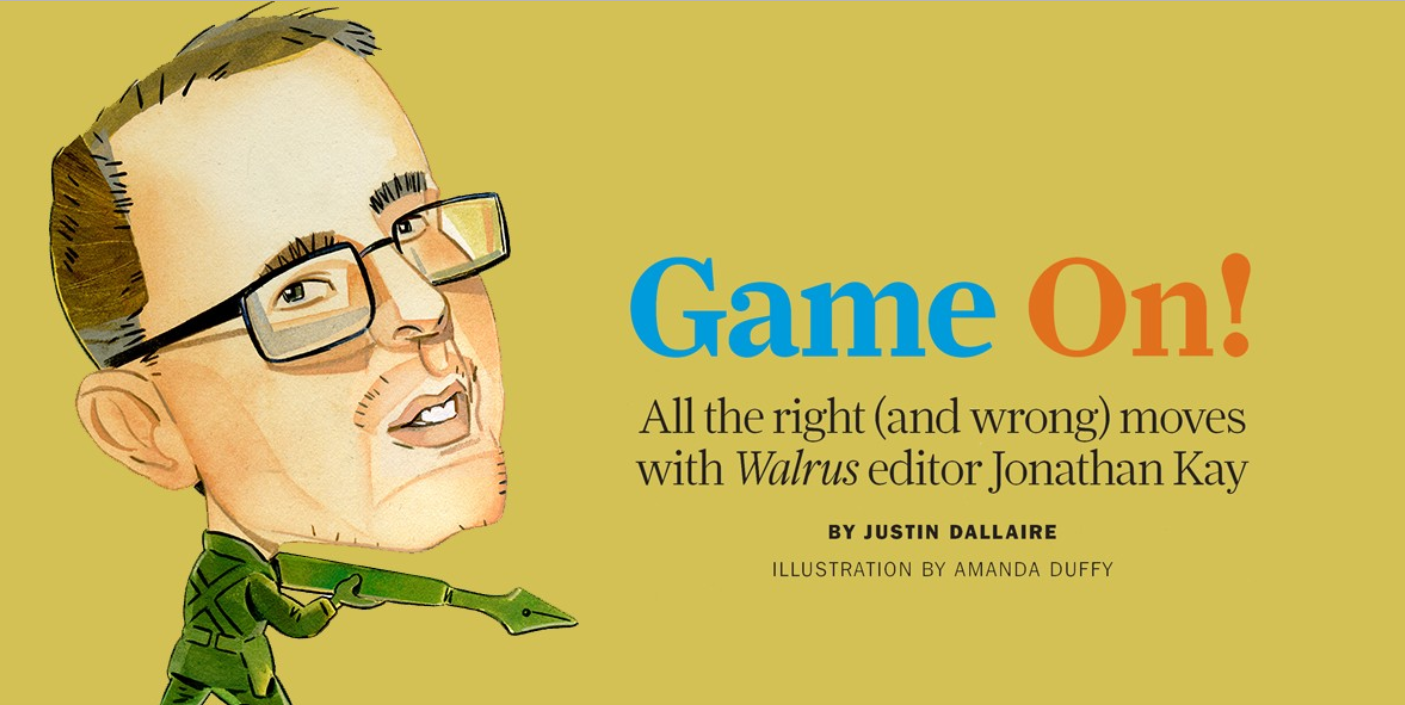How the RRJ approached profiling the editor-in-chief Twitter loves to hate.
By Justin Dallaire
The fix note for my first-draft profile of Walrus editor Jonathan Kay, for the Spring 2017 issue of the Ryerson Review of Journalism, included an eye-opening suggestion from my handling editor. Working hed: “A Conservative Fox in the Liberal Henhouse.” Dek: “In an effort not to bore readers with commentary perceived by its latest editor to be stuffy accepted wisdom, The Walrus is losing its liberal identity. The magazine is in the midst of a full-scale personality crisis, and editor Jon Kay thinks that’s just fine.”
Had I chosen to do that story, the piece would have written itself—with minimal interviews and with little thought to whether or not Kay represents progress or doom for the Walrus. The arguments for the latter are plastered all over the Twittersphere, all over the pages of Canadaland. With his idiosyncratic tendencies and conservative impulses, Kay is easy for the media to dislike. And as a young journalist looking to make a name for myself, I was not immune to the temptation of writing a take-down of the editor many love to hate.
But then I met Jon Kay. (Our first meeting, at the Patrician Grill in Toronto, is described at length in the piece.) He was not a monster, but rather a genuinely nice guy. We covered the big questions—his vision for the Walrus, his political inclinations, Canadaland—then, after turning off our recorders, he offered his advice: if I wanted the intimate details that make a good profile, I should do a lot more research, then come back with more difficult questions. Until you know where to poke, he said, “people have a hard time opening up.”
Gaining access to Kay was as easy as sending him an email after midnight on a weekday. Within minutes, he would respond, usually to accept my latest request for an interview. Having me accompany him during one of his board game nights at the Walrus office was his idea. And in December, after not having heard from me in a while, he sent me an email: “Hi Justin. I don’t know if you are still working on the article. But I wanted to give you some updates on my life so you can include them, if you wish.”
Interviews with other journalists, however, were harder to come by. After months of reporting, I had spoken to 26 people (among them friends and journalists with the off-the-record caveat) and sent unsuccessful interview requests to 29 others. Of the 12 of Kay’s former Walrus colleagues that I contacted, only one would speak to me. “I have no interest in discussing Jon,” said one. Another had signed a non-disclosure agreement.
As early drafts of my profile began being circulated among RRJ staff, I learned that a least one colleague felt I was being unduly sympathetic towards him. I’m sure there are others who will read the piece and feel the same. Part of the challenge lay in the amount of coverage the Walrus has received since Kay’s arrival. I didn’t want to fixate on the already-reported and known troubles at the magazine, but I certainly couldn’t afford not to mention them, either.
That many of Kay’s former Walrus colleagues declined to be interviewed suggests there is maybe a not-so-open-book side to the editor, one left largely unexplored in my profile. Kay may be more difficult to work with than his current colleagues, friends, and mother will admit. Or their silence may simply speak to the realities of Canadian journalism. After all, the journalism community is small, and many of my could-be-interviewees still work in the industry. It’s not every journalist who will go on record, especially when the subject is one of the most influential magazine editors in the country.
Read Dallaire’s story on the Ryerson Review of Journalism website.

